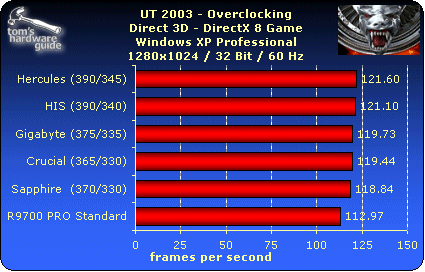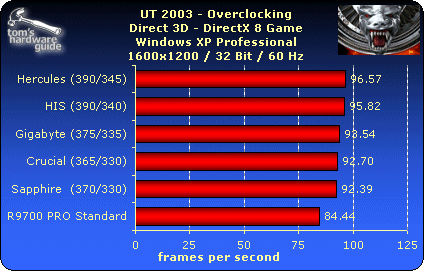Pixel-Churners: A round-up of Radeon 9700 PRO cards
Overclocking Tests
Overclocking tests are problematic by nature, since chip and RAM quality are extremely erratic. While all the manufacturers send regular production boards to the lab, it's hard to tell whether the purchaser of such a card will receive a model that has "better" or "worse" chips. Of course, running the cards at the default clock is not a problem. Overclocking, however, pushes the components to their limits, which may be higher, depending on the production lot. On the other hand, the workmanship of the board also plays a role.
The results obtained in this discipline are not strictly binding, but they are a good indicator of what to expect. That said, the passive RAM coolers installed on some of the cards appear to have a mostly decorative function, although it certainly can't hurt to keep the temperature of the memory chips somewhat lower. Since the original ATi card is a pre-production version, we've decided not to test it. Any results wouldn't have any bearing on the actual production versions. We would like to note, however, that the card ran stably up to 400/ 340.
We have not added any comments to the results for the reasons mentioned above. Note: the overclocking tests were performed with ATi Catalyst v02.3, since v02.4 was not available when the OC tests were performed. Since the new version enhances performance considerably, the values listed here are somewhat lower than the results published earlier in the article.
Get Tom's Hardware's best news and in-depth reviews, straight to your inbox.


